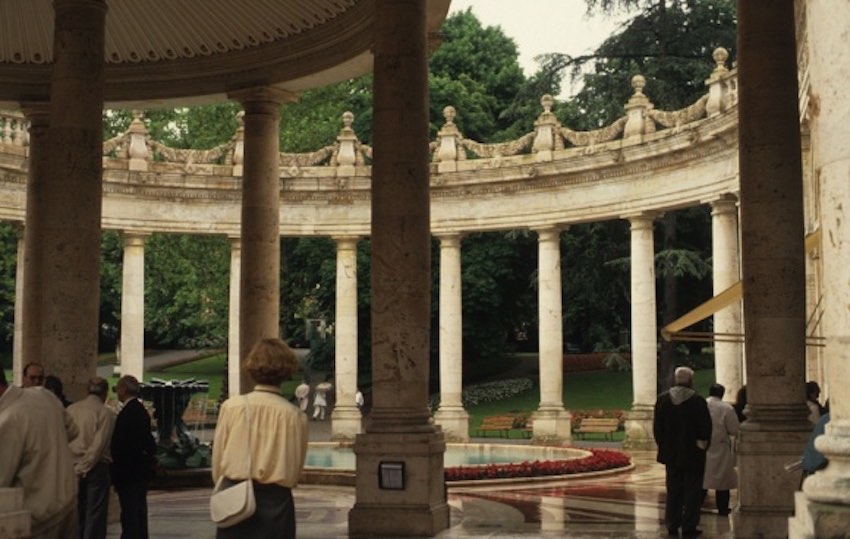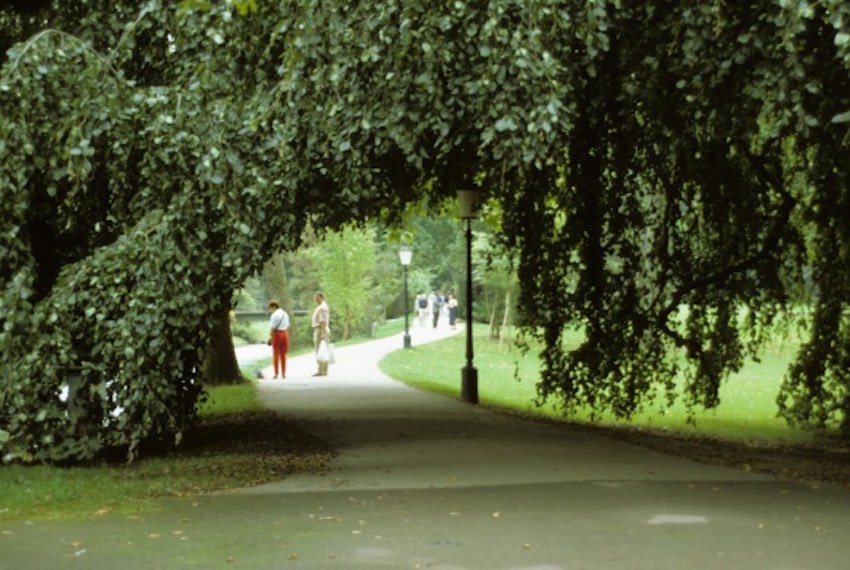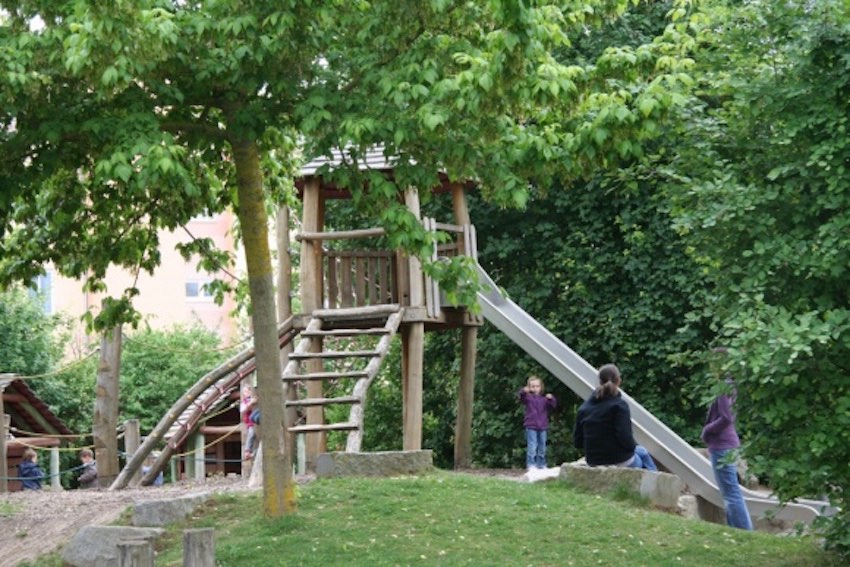We know intuitively that we need trees in our cities. They enhance the public realm, provide shade, cool the air in summer, frame our experience of the city, and make the city more beautiful.
Most historic cities – especially in Europe – are graced by the presence of many trees. But it has been quite a fight to get modern architects and planners to accept these untidy, unruly, objects as co-inhabitants in the urban realm.
Modern cities around the world have been built as agglomerations of “objects in space”. Buildings are as large as possible to maximize real estate investment opportunities. Open space is used to showcase the architects’ daredevil, artistic, or outrageous fantasies. Trees would spoil the view, and moreover, they have an annoying habit of scattering their litter hither and thither in the fall.
Older, wealthy residential neighborhoods are usually filled with trees, and yet the poorest neighborhoods lack parks and street trees.
From our partners:

The Pope speaks out against consumerist global development that benefits the economy at the expense not only of the poor – but of the earth: “…the earth herself, burdened and laid waste, is among the most abandoned and maltreated of our poor.”
Scientific Evidence
Scientists in all manner of research fields – public health, pollution analysis, landscape architecture, child development, ecology, biology, etc … by now have published a plethora of research findings that show we humans need trees and other forms of nature in our lives in order to keep healthy; and that it is detrimental to the health of the earth to build cities without nature.
Air Pollution
In highly air polluted areas (areas with high PM 2.5) you have about three times the rate of asthma, aggravation of heart or lung disease and premature mortality. The main causes are vehicles, industry, mining, and construction.
In Los Angeles, when the 405 freeway was closed, air quality improved 75% around the freeway, 25% across the region. Now, it might be nice to solve this problem by closing all our freeways – but that would be a very long-term solution, if at all possible – involving re-planning our cities as “cities of short distances” and encouraging more people to accept alternate transportation modes. But in the short term, we need to get trees to help us.
Many studies show that trees remove air pollution. This is of particular value in street canyons where vegetation can reduce particulate matter by as much as 60%. AMEC Foster Wheeler won an IMCL award at the 52nd IMCL Conference for their work for the Greater London Authority illustrating how green infrastructure could improve air quality along some of London’s most polluted roads. In canyons, upper canopy trees are avoided because they can trap pollution below them, but more slender trees, as well as bushes and green walls can be invaluable.
Pine trees are especially effective – their needles pick up more particles than broad leafed trees. Since particulates are heavier than air, pollution is worst close to the ground. Low bushes are therefore very efficient for cleaning the air for bicyclists and pedestrians, especially children.
Biodiversity
Trees are keystone supports for wildlife habitat for breeding, shelter, and food. But a tree cannot be an ISLAND. One tree cannot provide all the food needed to support diverse birds, squirrels, and insects, so trees have to be linked to other trees, bushes, plants, flowers, and the earth.
We need to increase biodiversity in our cities. Urban wildlife corridors are required to support the interaction of multiple species, supply diverse food sources, and provide safe routes for wildlife. This helps avoid habitat fragmentation, and territorial problems.
Not all trees are created equal. ‘Oaks benefit everything from caterpillars to songbirds. Even fish prosper, because the aquatic invertebrates they feed on favor oak leaves on stream bottoms’ reports Richard Conniff. According to Douglas Tallamy, a University of Delaware entomologist, who published a ranking of trees and shrubs according to how many caterpillar species they harbor, In contrast to oaks, which accommodate 537 species, gingkoes host just three. Willows support over 450 species, including insects that provide food for birds.
Gingkoes may host just 3 species of caterpillars, but that is not to say we should ban gingkoes and other non-native trees from our streets entirely because they certainly are magnificently beautiful in the fall.
Beauty
Beauty is also important. Where would Washington DC be without the Japanese cherry trees? And Portland’s Japanese garden would certainly be the poorer without the beautiful Japanese maple. And of course,
“beauty plays an important role in sustaining our psychological well-being.”
Health
We have known for many centuries that trees contribute to health and well-being. Hundreds of spa towns throughout Europe attest to this knowledge – and many of these spas have existed since Roman times. The treatment “prescription” that an Italian patient is given includes not only drinking the water, and taking mud baths, but also walking amid beautiful architecture in the park at Montecatini Terme and breathing deeply.
And a German patient may be prescribed treatment at Baden-Baden and told to take the waters, listen to the music at the café in the park, and take long walks beneath the massive trees along the banks of the rippling stream.
Numerous studies show that the availability of parks and green spaces increases the likelihood of physical exercise, and this results in better physical health, both for young and old.
Even the sight of a tree from one’s hospital room increases recovery from surgery, and Kuo has shown that a view of trees from one’s apartment reduces crime & aggression.
Almost all trees have medicinal properties. The bark of the willow contains salicin, similar to the active ingredient in aspirin. Eucalyptus is renowned for its antiseptic, antibacterial, anti-inflammatory and analgesic properties.
Neighborhoods with more trees
“Research shows that the more trees you have in your neighborhood, and the larger the trees are, the better you rate your own health.”
Moreover, you are correct – because people living in neighborhoods with more and bigger trees have significantly fewer cardio-metabolic conditions.
While some trees produce a lot of pollen, and thus cause asthma, it has been found that in neighborhoods with more diverse trees, there is reduced asthma in kids.
In neighborhoods with more trees, mothers are significantly less likely to deliver undersized babies, according to studies in 2011 by Geoffrey Donovan. This may in part have to do with reduced levels of stress. Being in green places among trees also protects emotional well-being in young and old.
Child development
There is a tremendous amount of research on how all aspects of child development are affected by their access to trees and green areas. For example, play in nature improves balance & coordination.
Contact with nature expands children’s sensory faculties and cognitive capacity. Learning about nature requires a larger vocabulary than possibly any other subject (except, perhaps, learning about humans). Contact with nature has been shown to improve children’s concentration and emotional resilience.
Play in nature has been shown to encourage more social play, and reduce and relieve incidence of Attention Deficit Hyperactivity Disorder (ADHD). Play in nature also teaches responsibility and nurturing skills according to Cobb.
Biophilia
Edmund Wilson coined the term biophilia, explaining that bonding with nature that is alive – birds, animals, insects, and human beings increases love for the earth, sense of awe, and desire to protect the earth. At every age, we all feel more alive and enjoy life more when we are in touch with other living things.
“Since trees are the cornerstone for biodiversity, we need trees to flourish in order for all other life to flourish.”
Trees mediate air temperature
“Large parks or residential neighborhoods with extensive vegetation can produce air temperature reductions as great as 10deg.F compared to nearby areas with little vegetation” according to McPherson and Simpson. Trees shade buildings in summer and admit sun in winter reducing energy demands. A large front yard tree can save about 9% of a typical home’s total air conditioning costs by shading the building from the afternoon sun and cooling the air around the building.
As a result of this air cooling effect, trees shape social life in public. Outdoor cafes and restaurants benefit if they can take advantage of shade from trees in hot summer months. Benches that take advantage of shade will be more popular in the summer than those with no shade. In winter, the opposite is true.
Tree shade may also encourage spontaneous conversations in public: people are more likely to pause to talk if they are comfortable walking through a tree-shaded square on a summer day than if they are walking across the same square without trees; conversely, they are more likely to pause to converse if the square is sunny on a cold autumn or spring day. This argues for deciduous trees.
Trees hide ugly buildings
Trees also offer us the most delightful advantage of hiding ugly buildings. I would have a lot of work for them if only they would grow taller!!!
This feature originally appeared in Livable Cities.



















